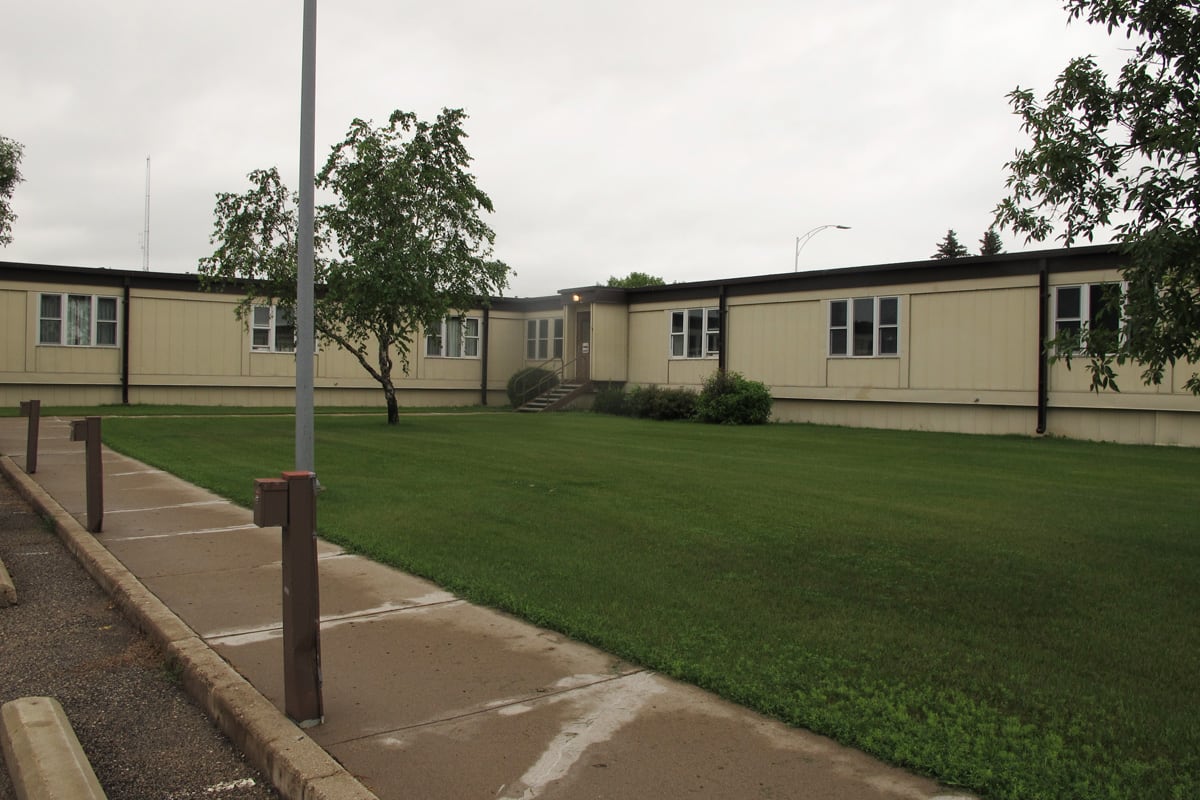CAVALIER AIR FORCE STATION, N.D. — A military radar installation in remote northeastern North Dakota that was established more than 40 years ago to track enemy ballistic missiles in a time of tense international relations is moving its living and working conditions out of the Cold War era.
The Cavalier Air Force Station, which has seen limited improvements since it was built in the early 1970s to deter the Soviet Union's nuclear arsenal, is getting a major facelift. It includes a recently constructed row of single-family houses, rehabilitation to an alert facility, a planned new dormitory for single airmen, and nearly $20 million in upgrades to the mammoth radar building that has been billed over the years as North Dakota's second tallest structure, after the Capitol.
"It looks like a giant square box in the middle of nowhere," is how Capt. Steven Meyer, the squadron's mission support flight commander, describes the building that houses the Perimeter Acquisition Radar Attack Characterization system.
The 10th Space Warning Squadron, part of the 21st Space Wing at Peterson Air Force Base in Colorado, has about 40 active military personnel stationed at any one time near Cavalier, about 15 miles south of the Canadian border. There are about 75 civilian workers at the base, some of whom are local contractors enjoying the new business.
The powerful radar serves both as a missile warning system, the base's primary mission, and as a surveillance system to track satellites and other vessels orbiting the earth.
"We're no longer in an era where it is a benign environment up there, where you just have two superpowers with a few objects up there," said Lt. Col. John Koehler, who took over this month as base commander. "Everybody is getting into the space game now. That means there is a lot of stuff up there."

A dormitory on the Cavalier Air Force Station built as a temporary housing structure and was described by one base captain as an "elongated trailer house."
Photo Credit: Dave Kolpack/AP
The improvements to the radar building are both exterior and interior. On the outside, a new hemp shell will help shield the building from electromagnetic pulses. On the inside, there are electronics upgrades that include new breakers, substations, switchboards, lighting panels, fire alarm systems and water pumps.
The base also is working with the North Dakota Historical Society to make sure the changes don't alter the facility's standing on the National Register of Historic Places, which has some people thinking the place is a museum, Meyer said.
"We're not gone. We're here every day, doing stuff," he said. "Obviously the Air Force is determined we are going to be here for a while and it's worth investing in and putting money into."
The investment into living quarters was long overdue, Meyer said. The current dorm, which he describes as an "extremely elongated trailer house," was built in 1973 as a temporary facility. There are window airconditioning units in each room, but the fact the building isn't temperature-controlled makes it "shorts and T-shirt weather" indoors year-round, Meyer said.
"As far as construction standards go, it's pretty much what it is. If we built this today, it would not fly at all," he said.
Koehler, the base commander, was busy last week getting his cable TV and other utilities in working order before his wife arrived. They will live in one of nine houses, at a cost of about $225,000 each, on the base's Garden Road. Another five houses are planned in the mini-neighborhood that brings Koehler back to his hometown of Clear Lake, Iowa.
"It's kind of like a little Mayberry," Koehler said.
"You wouldn't maybe expect it somewhere out here like that," he added. "It is a testament to the devotion of our leadership to make sure the quality of life is a top priority, especially in a remote area like that."





